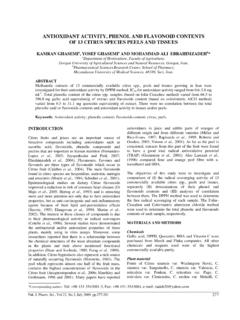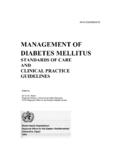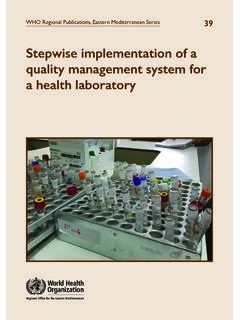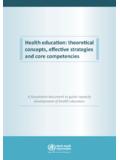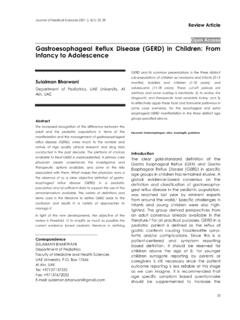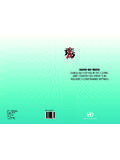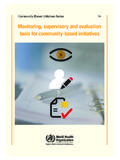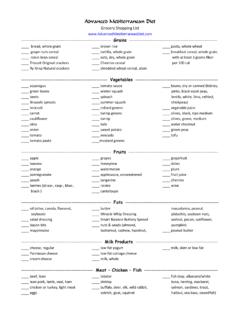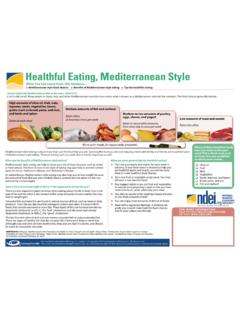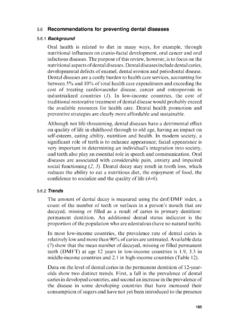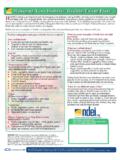Transcription of WHO Library Cataloguing in Publication Data
1 World Health Organization 2005 All rights reserved. The designations employed and the presentation of the material in this Publication do not imply the expression of any opinion whatsoever on the part of the World Health Organization concerning the legal status of any country, territory, city or area or of its authorities, or concerning the delimitation of its frontiers or boundaries. Dotted lines on maps represent approximate border lines for which there may not yet be full mention of specific companies or of certain manufacturers products does not imply that they are endorsed or recommended by the World Health Organization in preference to others of a similar nature that are not mentioned. Errors and omissions excepted, the names of proprietary products are distinguished by initial capital World Health Organization does not warrant that the information contained in this Publication is complete and correct and shall not be liable for any damages incurred as a result of its of the World Health Organization can be obtained from Distribution and Sales, World Health Organization, Regional Office for the Eastern mediterranean , PO Box 7608, Nasr City, Cairo 11371, Egypt (tel: +202 670 2535, fax: +202 670 2492.)
2 Email: Requests for permission to reproduce WHO EMRO publications, in part or in whole, or to translate them whether for sale or for noncommercial distribution should be addressed to the Regional Adviser, Health and Biomedical Information, at the above address (fax: +202 276 5400; email ).Cover design and layout by Ahmed HassaneinPrinted by Metropole, Cairo WHO Library Cataloguing in Publication DataKhatib, Oussama guidelines for the management of hypertension/Edited by Oussama Khatib, Mohamed Sayed El-Guindy p. (EMRO Technical Publications Series ; 29)1. Hypertension Treatment and Diagnosis 2. Cardiovascular Diseases Diagnosis 3. Hypertension Prevention and Control I. El-Guindy, Mohamed Sayed II.
3 Title III. WHO Regional Office for the Eastern mediterranean IV. Series ISBN : 978-92-9021-407-6 (NLM Classification : WG 340) ISSN : 1020-0428 ContentsForeword ..5 Preface ..7 Acknowledgements ..9 Introduction ..11 Definition and classification ..13 Systolic, diastolic and pulse pressures as predictors of risk ..14 Cardiovascular risk factors ..15 Causes of hypertension ..16 Diagnosis of hypertension ..18 Background ..18 Blood pressure measurement ..18 Home (self ) blood pressure measurements ..20 Ambulatory blood pressure monitoring (ABPM) ..21 Systolic blood pressure measurement during exercise or use of laboratory stressors ..23 Pseudo-hypertension ..23 Evaluation of hypertensive patients ..25 Background ..25 Signs of target organ damage ..27 Secondary hypertension.
4 30 Renal disorders ..32 Endocrinal disorders ..36 Pharmacological causes of hypertension ..40 Evaluation for hypertensive crisis ..41 Evaluation for hypertension in special groups and circumstances ..43 Treatment of hypertension ..48 Goals of therapy ..48 Lifestyle modifications ..48 Pharmacological therapy ..51 Specifics about antihypertensive drugs ..55 General strategies for antihypertensive treatment ..62 Therapy considerations in special groups and circumstances ..69 Therapy for hypertensive crisis ..75 Problems with adherence to management ..78 Prevention of hypertension ..80 General prevention ..80 Community approach to prevention of primary hypertension ..81 References ..84 Annex 1 Regional consultation on hypertension prevention andcontrol ..95 Annex 2 WHO list of essential anti-hypertension medicines.
5 974 Clinical guidelines for the management of hypertensionForewordThe World Health Organization has estimated that high blood pressure causes one in every eight deaths, making hypertension the third leading killer in the world. Globally, there are one billion hypertensives and four million people die annually as a direct result of hypertension. In the Eastern mediterranean Region, specifically, cardiovascular diseases and stroke are becoming major causes of illness and death. They account for 31% of deaths, and hypertension currently affects 26% of the adult population in the Region. These figures are attributable to ageing populations, high rates of smoking and changes in nutritional and behavioural habits. This necessitates setting priorities for screening, early detection and management of hypertension to be applied and followed among Eastern mediterranean countries, through community-based prevention is the most cost-effective approach to containing the emerging hypertension epidemic.
6 Obesity remains the single most important contributing factor and, in fact, most hypertensive patients in our Region are overweight or obese. Weight reduction reduces blood pressure and improves the effectiveness of drug therapy. A variety of lifestyle modifications have been shown, mostly in observational studies, to lower blood pressure and to reduce the incidence of hypertension. These include reduction of dietary sodium intake, weight loss in the overweight, physical activity, greater dietary potassium intake and a diet with increased fresh fruit and vegetables and reduced saturated fat intake. Smoking increases the risk of heart attack or stroke at least three-fold in hypertensive patients, an effect that can be almost abolished if smoking is ceased.
7 Doctors at primary health care centres have been shown to have the most effective frontline role in advising patients about ceasing smoking. Good management of hypertension is central to any strategy formulated to control hypertension at the community level. Randomized trials of drugs that lower and control blood pressure clearly show a reduction in mortality and morbidity but at the same time, since hypertension is associated with cardiovascular disease and diabetes, management and control is potentially costly. This Publication presents guidelines that recognize the complementary nature of non-pharmacological approaches to management and pharmacotherapy and which are cost-effective. Developing skills to apply the non-pharmacological approach presents a challenge, as most doctors in our Region must be trained to be able to advise their patients on a non-pharmacological approach.
8 Countries need a cost-effective drug management strategy that promotes adherence to medical therapy, motivates patients, builds trust and strengthens communications between clinicians and patients and their families. It 6 Clinical guidelines for the management of hypertensionis hoped that these clinical guidelines will make a positive contribution to the improved management of hypertension in the Region. Hussein A. Gezairy MD FRCS Regional Director for the Eastern MediterraneanPrefaceThis Publication aims to provide up-to-date, reliable and balanced information for the management and care of arterial hypertension in the WHO Eastern mediterranean Region. The Regional Consultation on Hypertension Prevention and Control held in Abu Dhabi, United Arab Emirates, 20 22 December 2003, acknowledged the need for a standardized response to the growing challenge of hypertension (see Annex 1).
9 These clinical guidelines respond to the suggestion of WHO and the International Society of Hypertension that regional experts draw up recommendations specifically directed toward the management of patients in their own region, as well as addressing the challenges highlighted at the Regional Publication updates Prevention and control of cardiovascular diseases (EMRO Technical Publications Series 22) published in 1995 and Prevention and management of hypertension (EMRO Technical Publication Series 23) published in 1996. After reviewing both publications, the Regional Office decided that the rapid developments and changes in management and care of hypertension over the past 10 years merited Publication of the latest evidence-based guidelines are aimed at standardizing the management and care of hypertension, including control of blood pressure and complications in people with established hypertension and identification of individuals with high blood pressure who are at increased risk of complications.
10 And at promoting integration of prevention of hypertension into primary health care settings, including lifestyle measures for prevention and management and guidelines are intended to benefit physicians at primary, secondary and tertiary level, general practitioners, internists and family medicine specialists, clinical dieticians and nurses as well as health and policy-makers in the Region. They provide the necessary information for decision-making by health care providers or patients themselves about disease management in the most commonly encountered situations. The information is evidence-based and is clearly stated to facilitate the use of the document in daily practice and living. Also accompanying the Publication is a quick reference card, which allows a readily accessible appraisal of hypertension management and care.
